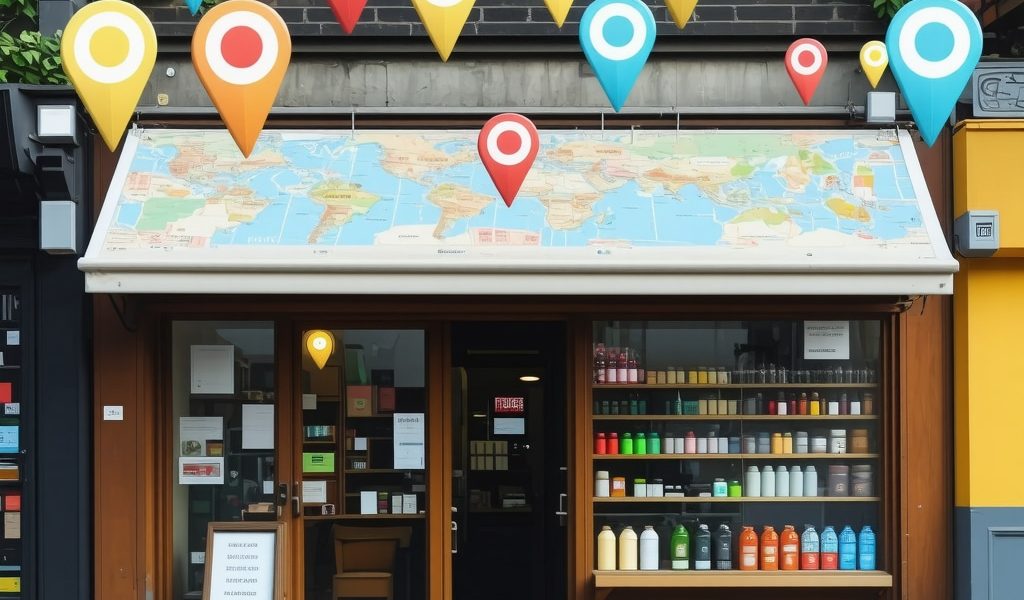Unlocking the Power of Google Maps for Local Business Growth
In today’s hyper-competitive digital landscape, small businesses must leverage every possible advantage to stand out. Google Maps SEO offers a unique pathway to amplify your local visibility, attract nearby customers, and ultimately drive foot traffic and sales. But mastering this niche requires more than just a basic listing—it demands strategic optimization, savvy engagement, and continuous refinement rooted in expert understanding.
Crafting a Magnetic Google Business Profile That Converts
At the heart of Google Maps SEO lies your Google Business Profile (formerly Google My Business). This digital storefront is often the first point of contact for prospective customers searching for local services. Beyond mere accuracy, your profile must tell a compelling story that resonates with your target audience.
Strategically embedding relevant keywords in your business description enhances your profile’s discoverability. For instance, incorporating geo-modifiers and service-specific terms naturally within your description can elevate your presence in relevant local queries. This technique aligns with advanced SEO principles highlighted in specialized optimization guides.
Harnessing Reviews and Customer Engagement to Dominate Local Search
Customer reviews are a cornerstone of Google Maps SEO, directly influencing rankings and consumer trust. Encouraging authentic reviews, responding promptly, and showcasing positive feedback not only boost your credibility but also signal to Google that your business is active and valued.
Implementing a systematic review management approach—such as the one detailed in GMB review generation best practices—can dramatically elevate your local authority. Moreover, engaging with reviewers fosters loyalty and can turn occasional customers into brand advocates.
How Can Small Businesses Leverage Google Maps SEO Without a Large Marketing Budget?
Small businesses often face budget constraints, yet Google Maps SEO offers cost-effective strategies to compete with larger enterprises. Prioritizing accurate and comprehensive business information, optimizing for hyperlocal keywords, and actively managing customer reviews can yield substantial visibility gains with minimal investment.
Additionally, leveraging free Google Business tools such as Google Posts for weekly updates (discussed in weekly GMB posting strategies) keeps your listing dynamic and engaging, which Google rewards algorithmically.
Strategic Location Targeting and Citation Management: The Twin Engines of Local SEO
Effective Google Maps SEO transcends the profile itself. Building consistent, high-quality citations across authoritative local directories solidifies your business’s online presence. Citation management ensures your Name, Address, and Phone number (NAP) data remains uniform, which is critical for Google’s trust and ranking algorithms.
Coupling citation management with hyperlocal SEO targeting specific neighborhoods or micro-areas can drive precisely targeted traffic. This combined approach is well-explained in hyperlocal SEO guides, which offer tactical insights for capturing nearby customers effectively.
By integrating these layered strategies, small businesses can secure prime placement in Google’s coveted 3-pack, dramatically enhancing visibility and customer acquisition potential.
Ready to elevate your small business with proven Google Maps SEO tactics? Dive deeper into advanced optimization techniques and start transforming your local search presence today. Share your experiences or ask questions below to join the conversation and learn from fellow local SEO enthusiasts.
For further authoritative insights, consider reviewing studies and recommendations from Moz’s Local SEO Guide (Moz Local SEO Overview), a leading resource in the domain.
Integrating Visual Content to Enhance Your Google Business Profile
From my experience, adding high-quality images and videos to your Google Business Profile can make a significant difference in attracting potential customers. Visual elements create an emotional connection and provide a clearer understanding of your services or products. When I started regularly uploading professional photos and short videos showcasing my business environment and team, I noticed a marked increase in engagement and clicks.
Google rewards profiles that provide rich and diverse content, which aligns with its goal to deliver the best user experience. This means updating your gallery with seasonal images or new product photos can keep your listing fresh and appealing. For more detailed tactics on this, you can explore weekly GMB posting strategies that emphasize consistent visual updates.
Why Consistent Data Across Platforms Matters More Than Ever
One challenge I’ve faced is maintaining NAP consistency—Name, Address, Phone number—across various online directories and platforms. Inconsistent information can confuse Google and potential customers alike, diluting your SEO efforts. I found that using citation management tools helped me automate this process, ensuring every listing matched my Google Business Profile exactly.
Moreover, citations from authoritative local directories add credibility. The more consistent and accurate your citations, the better your chances of ranking higher in local search results. This practice is backed by SEO experts and aligns with recommendations from Moz’s Local SEO Guide, which highlights the importance of citation consistency for local ranking improvements (Moz Local SEO Overview).
Have You Considered How User Interaction Signals Influence Your Google Maps Ranking?
Beyond optimizing your profile, I’ve learned that Google pays close attention to how users interact with your listing. Metrics like click-through rates, calls, direction requests, and even how often customers engage with posts impact your ranking. This means encouraging interactions and making it easy for customers to engage directly through your profile can boost your visibility.
For instance, I started including clear call-to-actions in my posts and regularly responded to questions and reviews. These small but consistent efforts helped build trust and increased local engagement, which Google rewarded with better placement in local search results. If you want to deepen your understanding of engagement strategies, check out effective GMB engagement strategies.
Balancing Automation and Personal Touch in Your GMB Management
Managing a Google Business Profile can feel overwhelming, especially when juggling multiple platforms and tasks. I found a balance between automation tools and personal interaction works best. Automated tools help with citation management and review monitoring, saving time and ensuring accuracy. Yet, personal responses to reviews and updates keep the voice authentic and customer-focused.
This blend not only streamlines operations but also fosters genuine connections with your local community. Your responsiveness reflects your brand’s reliability and care, elements that customers value deeply and that Google’s algorithms seem to favor when ranking local businesses.
If you’re looking for more comprehensive insights on optimizing your Google Business listing effectively, the guide at how to optimize your Google Business listing effectively provides actionable steps to refine your profile continually.
Elevating Local Rankings Through Strategic User-Generated Content Integration
User-generated content (UGC) transcends traditional reviews by encompassing photos, videos, Q&A interactions, and even social media mentions linked to your Google Business Profile. Incorporating UGC effectively can produce a multifaceted signal to Google, demonstrating authentic engagement and community trust. Businesses that actively encourage customers to share their experiences, tag their location, and upload multimedia content create a dynamic ecosystem that enhances local SEO beyond static profile optimization.
One advanced tactic is to embed UGC into your Google Posts and leverage it within your website’s local landing pages, reinforcing keyword relevance and authenticity. For instance, featuring customer photos with geo-tagged metadata can improve local relevance signals, a concept supported by recent studies from the Search Engine Land analysis on UGC and Local SEO. This integration not only boosts rankings but also enhances conversion rates by providing social proof and relatable content.
Harnessing Behavioral Analytics to Decode and Optimize User Interaction Signals
Google’s local ranking algorithm increasingly factors in nuanced user interaction metrics such as click-through rates (CTR), bounce rates, direction requests, call clicks, and even the duration of engagement with your listing. Advanced practitioners use behavioral analytics tools to monitor these signals and iteratively optimize their Google Business Profiles and related digital touchpoints.
For example, by analyzing search queries leading to your profile, you can tailor your business description and services to better match user intent. Heatmaps and session recordings on your website’s landing pages offer insights into user behavior that can be leveraged to reduce bounce rates and increase calls or bookings. This data-driven approach aligns with recommendations from industry leaders like Moz, which emphasize the critical role of user engagement metrics in local SEO success (Moz on User Behavior in Local SEO).
How Can Behavioral Signals Be Effectively Measured and Influenced to Enhance Google Maps Rankings?
Measuring behavioral signals requires a combination of tools and strategies. Google Analytics and Google Search Console provide foundational data on user behavior leading to your site and profile interactions. More specialized platforms like BrightLocal or SEMrush offer local SEO-specific insights, including direction requests and call tracking.
Influencing these signals involves optimizing your Google Business Profile’s content to align with user expectations, implementing strong call-to-actions, and ensuring seamless mobile usability. Prompt responses to customer queries and encouraging engagement through offers or events can also increase interaction rates. The key lies in continuous monitoring and agile adjustments based on data.
For those seeking to master this complex facet of Google Maps SEO, diving into Moz’s expert analysis on user behavior and local SEO is highly recommended.
Advanced Citation Auditing: Beyond Consistency to Authority Building
While citation consistency remains fundamental, the next frontier in citation management involves auditing the authority and relevance of each citation source. Not all citations carry equal weight; listings on high-authority local chambers of commerce, industry-specific directories, and niche community portals can dramatically influence your Google Maps rankings.
Implementing a periodic citation audit using tools like Whitespark’s Citation Finder helps identify not only inconsistencies but also opportunities to gain citations from authoritative and contextually relevant platforms. This strategic citation acquisition complements your hyperlocal SEO efforts by reinforcing topical relevance and trustworthiness in Google’s eyes.
Building a citation portfolio that balances volume, quality, and topical relevance positions your business as a local leader, which is especially critical in saturated markets.
Ready to apply these advanced strategies and further amplify your local search dominance? Engage with our expert-led resources or connect with seasoned local SEO professionals to tailor a roadmap unique to your business’s landscape and growth objectives.
Decoding Google’s Local Algorithm: The Role of Behavioral Analytics in SEO Precision
To truly excel in Google Maps SEO, understanding the intricate behavioral signals that Google assesses is imperative. Beyond conventional profile optimization, the platform’s algorithm meticulously evaluates user interactions such as click-through rates, call initiations, and direction requests. Harnessing advanced analytics enables businesses to tailor their profiles dynamically, aligning with user intent and enhancing engagement metrics that directly correlate with improved rankings.
Delving deeper, integrating tools like Google Analytics alongside specialized local SEO platforms empowers marketers to monitor real-time user behavior efficiently. This data-driven strategy facilitates iterative refinements that sharpen local search performance while fostering a user-centric experience.
Elevating Citation Strategies: From Uniformity to Strategic Authority Cultivation
While maintaining consistent NAP data is foundational, the next evolutionary step involves discerning the authority and topical relevance of citation sources. Not all citations exert equal influence; prioritizing placements on esteemed local chambers of commerce, niche industry directories, and contextually aligned community portals amplifies your business’s credibility in Google’s assessment.
Periodic citation audits, utilizing tools such as Whitespark’s Citation Finder, uncover gaps and high-value opportunities within your citation portfolio. This strategic curation not only fortifies your local relevance but also cultivates a resilient online presence that withstands competitive pressures in saturated markets.
How Can Behavioral Signals Be Effectively Measured and Influenced to Enhance Google Maps Rankings?
Measuring behavioral signals demands a multifaceted approach combining analytics platforms and proactive engagement tactics. Google Analytics and Search Console offer foundational insights into user journeys, while specialized tools like BrightLocal and SEMrush provide granular data specific to local interactions, including calls and direction requests.
Influencing these metrics necessitates optimizing your Google Business Profile with compelling content, clear call-to-actions, and seamless mobile responsiveness. Encouraging customer engagement through timely responses, exclusive offers, and interactive posts further elevates interaction rates. Continuous data monitoring and agile strategy adjustments are key to sustaining ranking improvements.
For an expert deep dive, Moz’s comprehensive analysis on User Behavior in Local SEO remains an authoritative resource.
Engage with Advanced Google Maps SEO Strategies for Transformational Local Growth
Embarking on these sophisticated optimization pathways can redefine your local search presence. By mastering behavioral analytics and cultivating a citation network rich in authority and relevance, your business positions itself at the forefront of local discovery.
We invite you to explore these advanced methodologies further and share your experiences or challenges. Engage with our expert community to unlock bespoke strategies tailored to your niche and geographical nuances, ensuring sustained growth and competitive advantage.
Frequently Asked Questions (FAQ)
What is Google Maps SEO and why is it important for local businesses?
Google Maps SEO refers to optimizing your Google Business Profile and related local signals to rank higher in Google’s local search results, particularly within Google Maps and the local 3-pack. It is crucial for local businesses because it increases visibility to nearby customers actively searching for relevant services or products, driving foot traffic and conversions with a high intent audience.
How can I optimize my Google Business Profile to improve local search rankings?
Optimization involves ensuring accurate and comprehensive information, embedding relevant local keywords naturally in your business description, regularly updating photos and posts, actively managing and responding to customer reviews, and maintaining consistent NAP (Name, Address, Phone) across all platforms. Integration of user-generated content and leveraging call-to-actions also enhance engagement signals.
Why does citation management matter in Google Maps SEO?
Citations are mentions of your business’s NAP details on authoritative local directories and platforms. Consistent and authoritative citations build Google’s trust in your business legitimacy and location data accuracy, directly impacting your local ranking. Citation audits help identify inconsistencies and opportunities for high-value placements, reinforcing your online presence.
What role do behavioral signals play in Google Maps rankings?
Google evaluates user interaction metrics such as click-through rates, calls, direction requests, and engagement duration with your listing. These behavioral signals indicate your business’s relevance and appeal to users. Optimizing your profile for better user experience and encouraging interactions can significantly enhance your local search position.
Can small businesses compete effectively with limited budgets using Google Maps SEO?
Absolutely. By focusing on foundational elements like accurate profiles, hyperlocal keyword targeting, review management, and free tools such as Google Posts, small businesses can improve visibility cost-effectively. Strategic citation building and engaging content also provide competitive leverage without large marketing expenditures.
How can user-generated content (UGC) be leveraged to boost local SEO?
UGC such as customer photos, videos, Q&A interactions, and social media mentions enrich your profile with authentic signals of engagement and trust. Integrating UGC in Google Posts and your website’s local pages enhances keyword relevance and provides social proof, which can improve rankings and conversion rates.
What tools are recommended for monitoring and improving Google Maps SEO performance?
Google Analytics and Google Search Console provide foundational data on user behavior and traffic sources. Specialized platforms like BrightLocal, Whitespark Citation Finder, and SEMrush offer local SEO-specific insights including citation audits, call tracking, and direction requests. These tools facilitate data-driven optimization and agile strategy adjustments.
How do I balance automation and personal interaction in managing my Google Business Profile?
Automation tools are invaluable for citation management and review monitoring, saving time and ensuring accuracy. However, personal responses to reviews and customer queries maintain brand authenticity and build trust. A hybrid approach maximizes operational efficiency while nurturing genuine community engagement.
What are the advanced strategies for elevating citation quality beyond consistency?
Beyond uniform NAP data, prioritizing citations on authoritative and contextually relevant sources such as local chambers of commerce, industry-specific directories, and niche portals amplifies credibility. Regular citation audits help identify high-value opportunities that enhance topical relevance and competitive positioning.
How often should I update my Google Business Profile content and visuals?
Consistent updates, ideally weekly or biweekly, keep your profile fresh and engaging. Regularly adding new photos, videos, Google Posts, and responding to reviews signals activity to Google, which can positively impact rankings and user engagement.
Trusted External Sources
- Moz Local SEO Guide (moz.com/learn/seo/local): A comprehensive resource offering foundational and advanced tactics for local SEO, including citation management, behavioral signals, and profile optimization.
- Whitespark Citation Finder (whitespark.ca/citation-finder): A specialized tool for auditing and building citations, critical for maintaining consistency and authority in local listings.
- BrightLocal (brightlocal.com): A platform offering detailed local SEO analytics, including review management, citation tracking, call and direction request monitoring.
- Search Engine Land – UGC and Local SEO Analysis (searchengineland.com/ugcs-impact-on-local-seo-388947): Insightful analysis on how user-generated content impacts local SEO strategies and rankings.
- Moz Blog on User Behavior in Local SEO (moz.com/blog/importance-user-behavior-local-seo): An expert examination of behavioral analytics and their influence on local search success.
Conclusion
Mastering Google Maps SEO is a dynamic process that blends foundational accuracy with sophisticated strategies including behavioral analytics, authoritative citation building, and authentic customer engagement. By optimizing your Google Business Profile with relevant keywords, rich visual content, and active review management, your local business can not only improve visibility but also foster meaningful connections with the community. Leveraging user-generated content and continuously monitoring interaction signals enables agile refinements that elevate your local rankings sustainably.
Small businesses, regardless of budget, can harness these expert-driven tactics to compete effectively and capture high-intent local customers. The path to local search dominance requires a strategic, data-informed approach combined with genuine customer-centric practices.
We encourage you to apply these insights, stay engaged with evolving best practices, and share your experiences or questions to grow alongside the vibrant local SEO community. Explore related expert content and begin transforming your Google Maps presence today!



